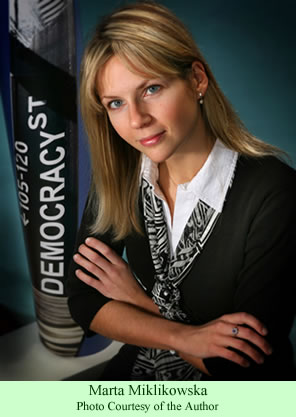An intriguing journal article last fall examined the Semai of Peninsular Malaysia and the Mardu of Western Australia in the light of values theory to search for the structures, attitudes and relationships that help form peaceful societies. Marta Miklikowska and Douglas P. Fry came to some interesting conclusions after examining the two societies.
 The authors, both of whom are at the Ǻbo Akademii University in Finland, open their work by describing the implications of values research, particularly the theories of Shalom H. Schwartz. His theories indicate that the values people hold are more than just abstract expressions of idealistic behaviors. Rather, they express people’s basic needs, they provide goals, and they motivate individuals to take effective actions in handling conflicts.
The authors, both of whom are at the Ǻbo Akademii University in Finland, open their work by describing the implications of values research, particularly the theories of Shalom H. Schwartz. His theories indicate that the values people hold are more than just abstract expressions of idealistic behaviors. Rather, they express people’s basic needs, they provide goals, and they motivate individuals to take effective actions in handling conflicts.
The values theory of Schwartz, the authors explain, holds that there are ten different value types that can be organized into two different dimensions. Miklikowska and Fry spend most of their effort in contrasting self-enhancing values with their polar opposite, self-transcending values. Self-enhancement values focus the individual on striving for power, domination, selfish pursuits, and personal achievements. Self-transcendence values focus people on equality, caring for others, concern for nature, appreciation of diversity, and the general welfare.
“This body of research shows that values create a motivational context in which aggression and violence are either facilitated or inhibited within and among groups,” the authors tellingly write (p.126). Self-transcending values correlate positively with promoting peace, cooperative behaviors, altruism, and pro-social views on many issues, and negatively with anti-social behaviors such as dominating others, authoritarian actions, and aggressiveness.
 The point of the study conducted by Miklikowska and Fry was to see how self-transcending values contribute to peacefulness in two different parts of the world—Peninsular Malaysia and the Western Desert of Australia. They start with the Semai, a society in Malaysia which is also profiled in some detail in this website.
The point of the study conducted by Miklikowska and Fry was to see how self-transcending values contribute to peacefulness in two different parts of the world—Peninsular Malaysia and the Western Desert of Australia. They start with the Semai, a society in Malaysia which is also profiled in some detail in this website.
The Semai treasure their affiliating values—cherishing others, believing in harmony, and opposing fighting. Their egalitarian beliefs, essential aspects of their affiliating values, are important to them. They are constantly concerned about nurturing others and satisfying their needs. And, most interesting, the Semai seek to avoid any actions that might arouse emotions, since they associate such arousal with possible conflicts, which they try to avoid. They suppress emotional outbursts and deny feelings of anger.
Further, the Semai are fanatics about resolving conflicts. If they have difficulties that they cannot resolve by interpersonal means, they conduct a becharaa’, a public meeting that Robarchek has described in a number of publications, one of which is available in this website. These meetings serve to diffuse conflicts by, literally, talking them to death—settling matters so they cannot be brought up again. One could wish the authors had evaluated the research published in 2009 by Edo and others which proposes a different perspective on Semai conflict resolution strategies. The article by Edo et al. indicates that the formal Becharaa’ meetings are recent innovations, derived from Malay precedents that were not native to Semai tradition. Doubtless the Edo et al. piece was published after Miklikowska and Fry submitted their article for publication. A minor point.
The authors argue that Semai children, raised in an environment where they never experience or witness aggression or violence, have no way of learning how to be aggressive. The children’s image of the world is a nonviolent one, a pattern that is repeated, of course, in other peaceful societies, where children can only model harmonious behavior if that is all they witness.
Miklikowska and Fry also describe the existence of a peace system in Peninsular Malaysia, particularly among the so-called “Orang Asli” (aboriginal) societies. The Semai and the other aboriginal societies have no history of going to war with one another, a pattern that occurs in other parts of the world—the Upper Xingu valley in Brazil, the Inuit of Greenland, the Nilgiri Hills of India, the Western Desert of Australia, and so on.
The Semai and their neighbors, the Batek, the Chewong, the Jahai, and perhaps others, do not, and have not, fought with one another. They have a very long tradition of coexisting nonviolently—part of their self-transcending values.
The authors provide comparable details about the Mardu, an Aboriginal society of Australia’s Western Desert. While they are not as peaceful as the Semai—they do fight at times—the Mardu are able to effectively diffuse conflicts, limit most aggressiveness, and make sure that warfare is only symbolic in nature. They emphasize sharing and cooperation in their elaborate kinship networks.
The essence of their belief system is absolute equality, though the authors qualify that. The Mardu have a more pronounced gender and age hierarchy than the Semai, but leadership is ritualized and is not at all authoritarian. When they do fight, the fighting is conducted mostly as a public drama, a ritualized enactment consisting of posturing and hostilities that permits very little bloodshed.
Though very different from the Orang Asli peoples, the Western Australian Aboriginal societies also have a peace system that mostly prevents outbreaks of warfare. The nature of their environment—an extremely harsh, unforgiving desert—means that the best way people can survive is to have no defined boundaries and to freely move into the territories of others when drought or famine threatens. Peace serves them all.
The authors conclude that self-transcending values contribute to peacefulness in and among societies in several clearly definable ways. For one thing, they argue, these values inhibit violent behavior. This can be seen clearly in the details they present about both the Semai and the Mardu. Aggressiveness is incompatible with the values of both, which favor, instead, cooperation and nurturance.
Secondly, self-transcending values contradict and diminish violent responses to conflicts. Instead, those values favor toleration, avoidance, and restraint. Thirdly, self-transcending values promote self control and the denial of anger. Miklikowska and Fry wisely conclude that “the ethnographic data on the nonviolent Semai and their equally peaceable Malaysian neighbors as well as on the nonwarring Mardu and their neighbors suggest that self-transcendent values contribute to both internal and external peace” (p.133).
This fascinating article is available for purchase by individuals who do not have access to a library which subscribes to the journal Beliefs and Values. Highly recommended.
Miklikowska, Marta and Douglas P. Fry. 2010, “Values for Peace: Ethnographic Lessons from the Semai of Malaysia and the Mardu of Australia.” Beliefs and Values (2, no.2): 124-137